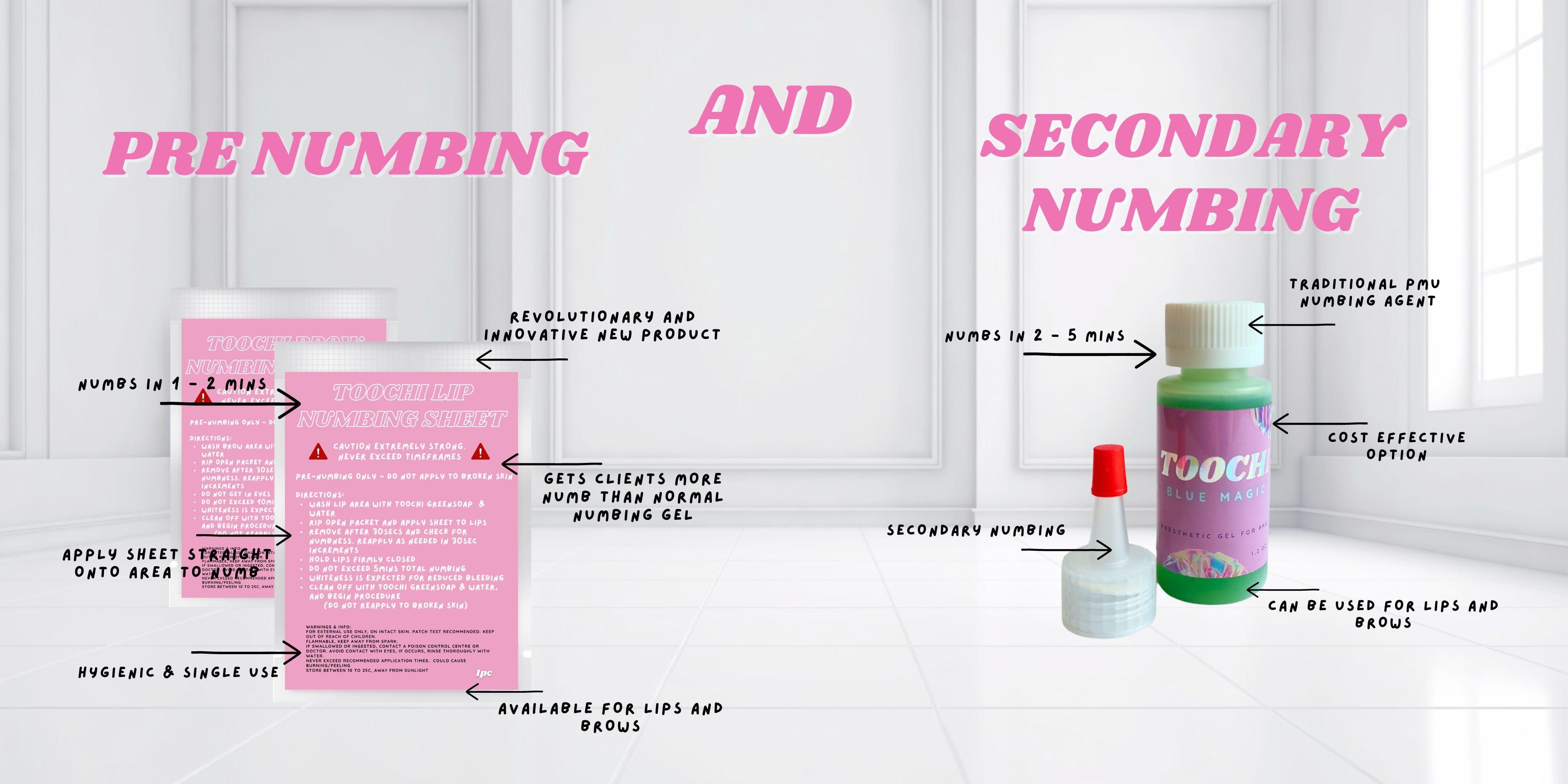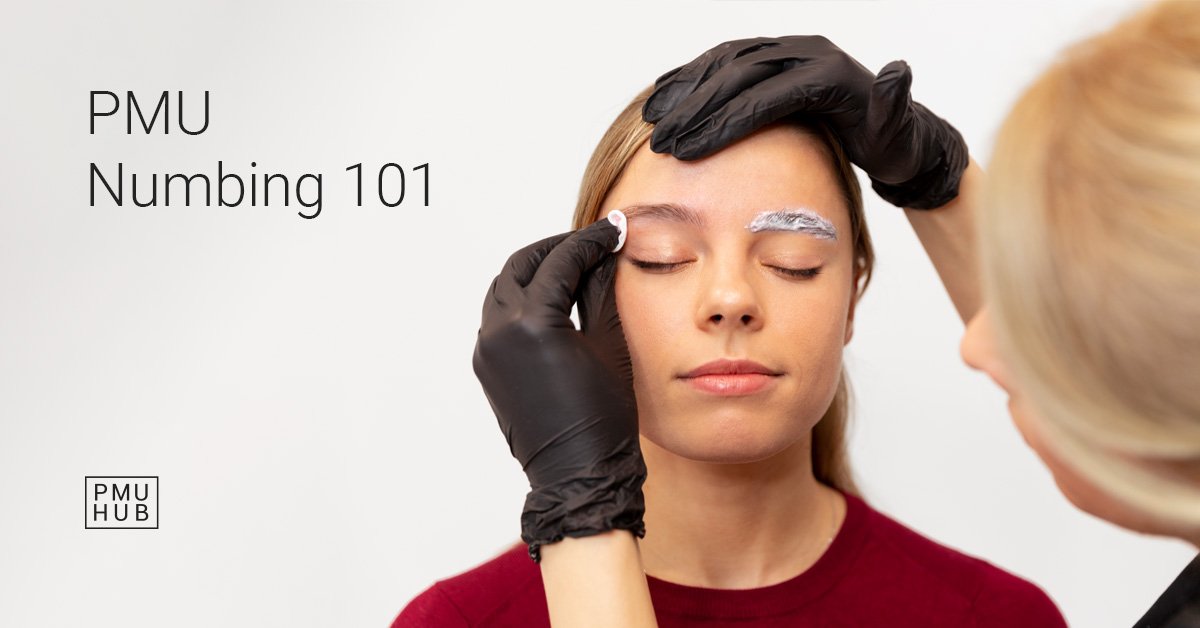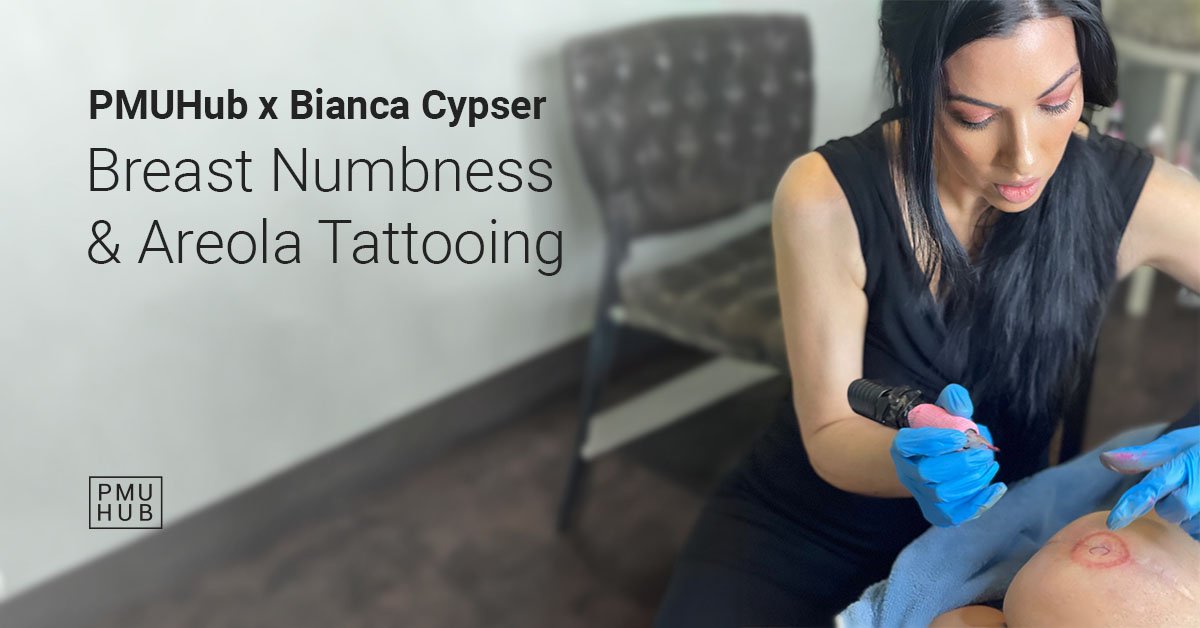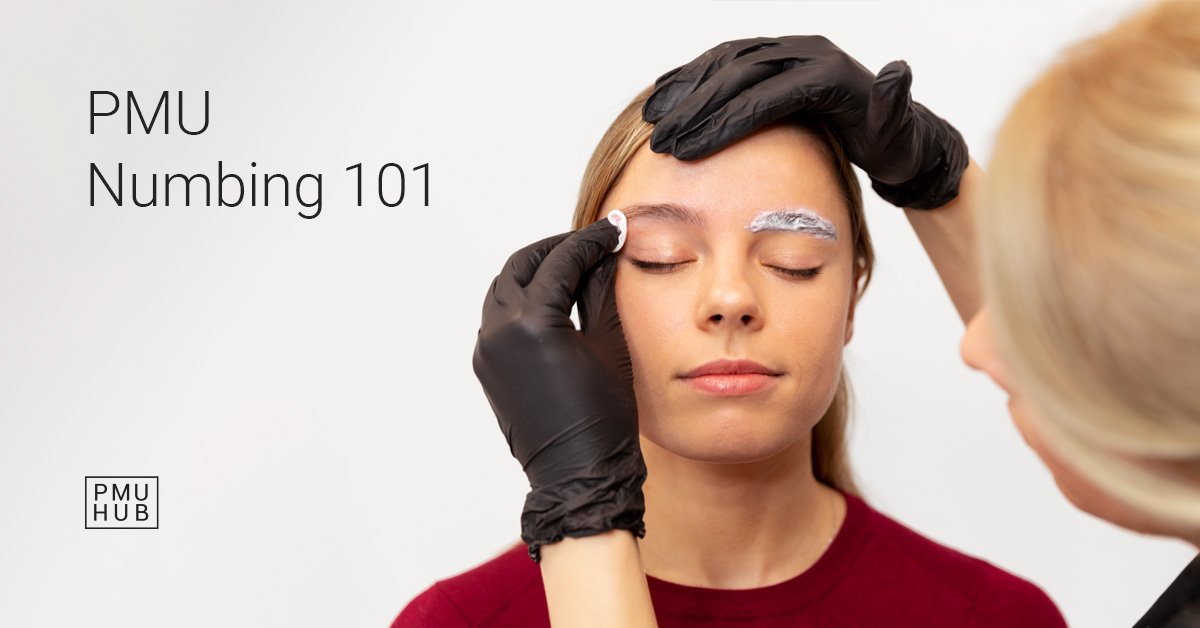In “Understanding The Numbing Process In PMU,” you’ll gain insights into the crucial step of numbing in the world of Permanent Makeup (PMU). As we explore this topic, we’ll touch upon the significance of numbing, the techniques used, and the expertise behind it. Acquaint yourself with the artistry of Ms. Elizabeth Smith, the skilled owner of Million Dollar Brows, who boasts over 13 years of experience in the beauty industry. Her expertise, coupled with a deep understanding of the numbing process, ensures you receive the best treatment and a comfortable experience throughout your PMU journey.
What is PMU?
PMU, or Permanent Makeup, is a cosmetic procedure that involves the application of pigment to enhance one’s facial features. It is also known as micropigmentation or cosmetic tattooing. PMU can be used to create defined eyebrows, eyeliner, lip liner, and even simulate the appearance of hair on the scalp through scalp micropigmentation. This procedure offers a long-lasting solution to those who want to enhance their natural beauty and save time in their daily beauty routine.
Definition of PMU
PMU, as mentioned earlier, is a cosmetic procedure that uses tattoo-like techniques to implant pigments into the dermis layer of the skin. Unlike traditional tattooing, PMU does not penetrate as deeply, resulting in a softer, more natural appearance. The pigments used in PMU are specially formulated to match individual skin tones and are designed to fade over time, allowing for adjustments as trends and personal preferences change.
Common PMU procedures
There are several common PMU procedures that are sought after by individuals looking to enhance their features. These include:
- Eyebrow Microblading: A technique that creates hair-like strokes to fill in sparse or thin eyebrows.
- Eyeliner: Enhances the eyes by creating the appearance of fuller lash lines or winged eyeliner.
- Lip Blushing: Adds color and definition to the lips, creating a fuller and more youthful appearance.
- Scalp Micropigmentation: Mimics the look of a closely shaved head or adds density to thinning hair.
Importance of Numbing in PMU
Why numbing is necessary
Numbing is an essential step in the PMU process to ensure the comfort of the client during the procedure. PMU involves the use of needles to deposit the pigments into the skin, and this can cause varying levels of discomfort and pain. By numbing the area beforehand, clients can have a more pleasant experience and reduce any potential anxiety.
Benefits of using numbing agents
The use of numbing agents in PMU procedures offers several benefits. Firstly, it provides pain relief, making the procedure more comfortable for the client. Numbing agents also help to reduce swelling and inflammation during and after the procedure, enhancing the healing process. Additionally, numbing agents can help to minimize bleeding during the procedure, allowing for better precision and optimal pigment retention.

This image is property of www.toochitattoo.com.
Different Types of Numbing Agents
Topical numbing creams
Topical numbing creams are widely used in the PMU industry. These creams contain active ingredients such as lidocaine, benzocaine, or tetracaine, which work to block nerve signals and numb the area where they are applied. Topical numbing creams are typically applied to the skin and left on for a specific amount of time before the procedure.
Numbing gels
Numbing gels are similar to topical numbing creams, but they have a gel-like consistency, making them easier to apply and control. These gels also contain numbing agents such as lidocaine and can provide effective numbing for PMU procedures. Numbing gels are often preferred for areas that require a more precise application, such as the lips or eyelids.
Injectable numbing solutions
Injectable numbing solutions, such as lidocaine injections, are sometimes used for more invasive PMU procedures or for clients who may have a lower pain threshold. These solutions are injected into the targeted areas, numbing the skin and providing longer-lasting pain relief. Injectable numbing solutions are administered by trained professionals and require careful consideration of proper dosage and technique.
How Numbing Agents Work
Mechanism of action
Numbing agents work by blocking nerve signals in the skin, preventing them from reaching the brain and registering as pain. The active ingredients in numbing creams and gels, such as lidocaine, bind to the sodium channels in the nerve endings, preventing the transmission of pain signals. This allows the client to feel minimal discomfort during the PMU procedure.
Effects on nerve endings
When a numbing agent is applied to the skin, it penetrates the epidermis and reaches the nerve endings. The numbing agent then interferes with the nerve’s ability to transmit pain signals, temporarily desensitizing the area. This desensitization allows the PMU artist to work with more precision and reduces the discomfort experienced by the client.

This image is property of www.pmuhub.com.
Application Techniques for Numbing
The importance of proper application
Proper application of numbing agents is essential to ensure their effectiveness during the PMU procedure. It is crucial to follow the instructions provided by the manufacturer and consult with a trained professional if necessary. The numbing agent should be applied in a smooth, even layer, covering the entire area to be treated. This ensures that the numbing agent reaches all the nerve endings and provides consistent pain relief.
Recommended waiting times before the procedure
The waiting time after applying a numbing agent will vary depending on the specific product used. Generally, it is recommended to wait at least 20 to 30 minutes for topical numbing creams and gels to take full effect. This allows the active ingredients to penetrate the skin and begin numbing the area effectively. However, it is important to note that individual responses to numbing agents may vary, so it is essential to communicate with the client about their comfort level before proceeding with the PMU procedure.
Choosing the Right Numbing Agent
Considerations for different skin types
When choosing a numbing agent for a PMU procedure, it is crucial to consider the client’s skin type and any specific sensitivities they may have. Some individuals may have more sensitive skin, while others may have a higher pain threshold. Numbing agents with lower concentrations of active ingredients may be suitable for those with more sensitive skin, while those with a higher pain threshold may require a stronger formulation.
Products recommended by professionals
There are several reputable brands and products that are recommended by PMU professionals. It is essential to choose numbing agents from trusted sources to ensure their safety and effectiveness. Some popular numbing creams and gels in the PMU industry include Dr. Numb, Zensa, and NumbSkin. These products have been widely used and have garnered positive reviews from both clients and professionals alike.

This image is property of www.pmuhub.com.
Precautions and Side Effects
Possible allergic reactions
While numbing agents are generally safe to use, allergic reactions can occur in some individuals. It is important to conduct a patch test before applying any numbing agent to the skin. This involves applying a small amount of the product to a small area of the skin and monitoring for any adverse reactions, such as redness, itching, or swelling. If any allergic reactions occur, the use of the product should be discontinued immediately, and a healthcare professional should be consulted.
Precautions to take before applying numbing agents
Before applying numbing agents, it is important to cleanse the skin thoroughly to remove any dirt or oils that may interfere with the absorption of the numbing agent. It is also crucial to ensure that the numbing agent is applied only to the intended area and does not come into contact with the eyes or mucous membranes. Following these precautions helps to minimize any potential risks or side effects associated with numbing agents.
The Role of the PMU Artist in the Numbing Process
Understanding the artist’s responsibility
The PMU artist plays a crucial role in the numbing process. It is their responsibility to assess the client’s needs, communicate the importance of numbing, and ensure the client’s comfort throughout the procedure. The artist should have a thorough understanding of different numbing agents, their appropriate application techniques, and potential side effects. By providing a safe and comfortable environment, the PMU artist can create a positive experience for the client.
Communication with clients regarding numbing
Effective communication between the PMU artist and the client is essential regarding the numbing process. The artist should explain the purpose of numbing, how it works, and the potential benefits and risks involved. It is important to address any concerns or questions the client may have and provide them with realistic expectations about the level of discomfort they may experience. By establishing trust and open communication, the PMU artist can ensure a smoother and more satisfying numbing process.

This image is property of www.pmuhub.com.
Client Experience during the Numbing Process
Sensations and feelings during numbing
During the numbing process, clients may experience a range of sensations and feelings. Initially, there may be a slight tingling or cooling sensation as the numbing agent begins to take effect. As the numbing agent penetrates deeper into the skin, clients may feel a localized numbness or absence of sensation in the treated area. It is important for the client to communicate any discomfort or pain they may still feel to the PMU artist, as additional numbing can be administered if needed.
What to expect during and after the numbing process
During the PMU procedure, clients should expect minimal discomfort or pain in the numbed area. The numbing agent should effectively block nerve signals, allowing the artist to work smoothly and precisely. After the numbing process, clients may experience some residual numbness or swelling, which is normal and typically subsides within a few hours. It is important for clients to follow the aftercare instructions provided by the PMU artist to ensure proper healing and minimize any discomfort.
Post-Procedure Care and Maintenance
Advice for proper healing and minimizing discomfort
After a PMU procedure, proper care and maintenance are crucial for optimal healing and minimizing discomfort. It is recommended to avoid touching the treated area with dirty hands and to keep the area clean and dry. Applying a thin layer of antibiotic ointment or a recommended aftercare product can help to soothe the skin and promote healing. It is also important to avoid exposing the treated area to excessive sunlight or extreme temperatures and to follow any specific instructions provided by the PMU artist.
Recommended aftercare products
There are various aftercare products available that can aid in the healing and maintenance of PMU procedures. These products are specifically formulated to nourish the skin and help prolong the life of the pigments. Some commonly recommended aftercare products include gentle cleansers, moisturizers, and SPF lip balms or sunscreens. It is important to choose products that are suitable for the specific PMU procedure and consult with the PMU artist for personalized recommendations.
When considering a PMU procedure, understanding the numbing process and the importance of proper application techniques is crucial. By choosing the right numbing agent, following aftercare instructions, and communicating openly with the PMU artist, clients can have a comfortable and satisfying experience. The use of numbing agents in PMU procedures not only ensures the client’s comfort but also allows the artist to create beautiful and precise results that enhance natural features. So, if you’re looking to enhance your beauty with a PMU procedure, don’t forget the importance of numbing for a pleasant and pain-free experience.




